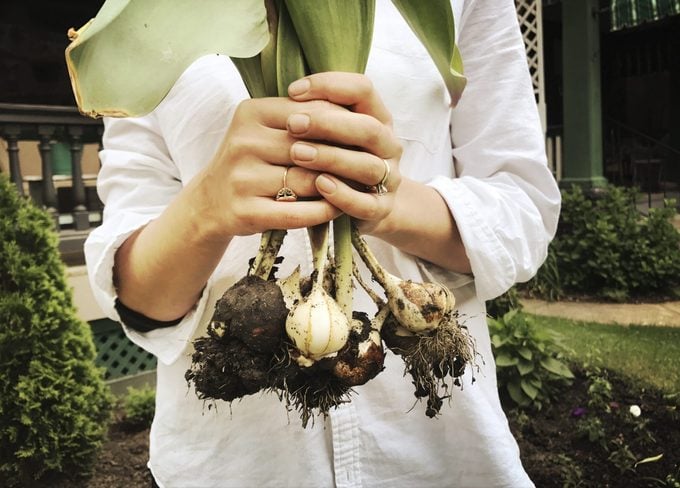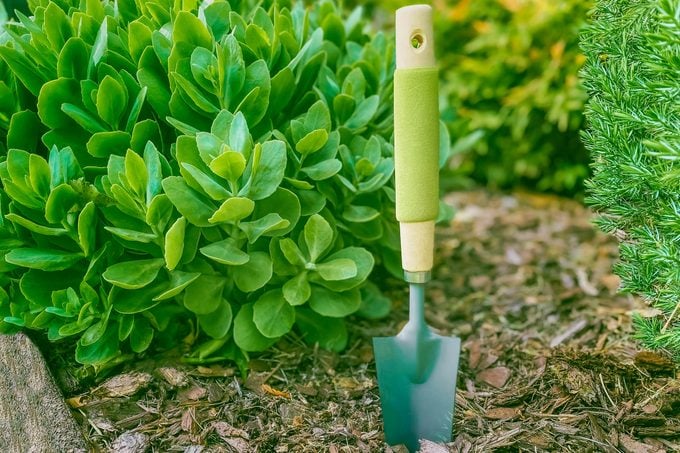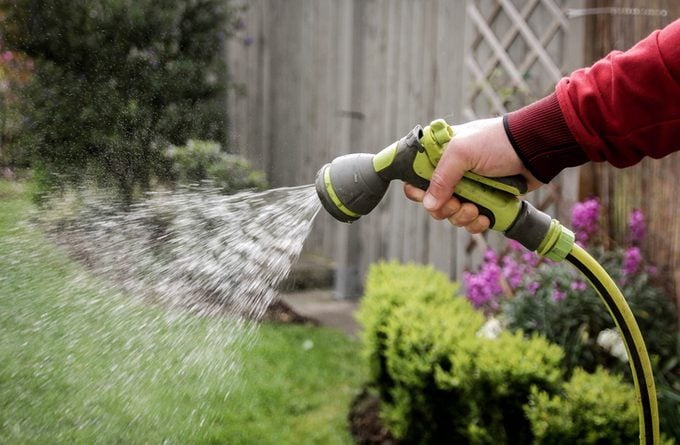How to Safely Transplant Perennials and Flowers
Updated: Jan. 31, 2023
When is the best time for transplanting perennials? Almost any time of the year! Learn foolproof tips for replanting flowers.
Replanting Flowers: The Basics

“Why didn’t I plant those daffodils beside the doorstep? Now I have to wait until fall to transplant!” The best ideas don’t always come to us when we want them to. Those coppery orange daylilies in your summer garden, for instance—they sure are showstoppers, but it’s a shame the blue veronicas are way over there. They would be glorious with the daylilies. We’ve all done it. No matter how much time we spend figuring out where to plant what, we always make mistakes. We think we have it just right—until the plants come into bloom. Then all we can think of is replanting those flowers.
These are the best flowering perennials that bloom all summer.
It goes on all season, as plants grow and bloom and show us the error of our ways. Sometimes we’re off by a matter of inches, or sometimes many feet. Don’t live in regret, though. The next time you think, Why didn’t I plant that here instead of there? just dig right in and fix it on the spot. I call it designing with a shovel. Go ahead and move those bright Asiatic lilies behind the cool blue campanulas, or partnered the deep red rose with the pure white Shasta daisies.
Learn how to plant shrubs and bushes.
Which Flowers and Perennials Can You Transplant?
All of these plants, plus many more, can be transplanted in bud or bloom:

- agastache
- artemisia
- Asiatic lilies
- Monch aster
- bee balm
- bulbs
- Goldsturm black-eyed Susan
- cardinal flower
- campanulas
- thread-leaved coreopsis
- daylilies
- feverfew
- liatris
- mums
- obedient plant
- phlox
- coneflower
- sedum
- Shasta daisy
- Siberian iris
- veronica
- yarrow
Dividing perennials: Here’s how, when and why you should divide plants.
When Is the Best Time to Transplant Perennials?

Sure, you could wait to transplant misplaced perennials and bulbs until fall, when plants are done blooming, or early spring, when they’re just getting growing. But why wait? You can move many perennials—anything with fibrous roots—and just about any bulb while they’re in bud or even in bloom.
For best results, transplant on a cloudy day if you can so the plant won’t lose moisture to the sun from its leaves. If you can’t wait for the weather, transplant in late afternoon. That way the plant can begin settling in without being stressed by a day of sun.
Of course, the most important thing you’ll need for designing by shovel is something you already have—water. No matter how careful you are when digging, you’re going to slice through some roots, and roots bring the plant water. Until they settle themselves in the new spot, the plant won’t be able to get enough water to keep it from wilting. The solution? Watering at every step of the way.
Learn how to overwinter non-hardy bulbs and tropical plants.
How to Transplant Perennials

Start by giving the plant you intend to move a good drink so it’ll be well-hydrated by the time you transplant. Decide exactly where the plant is going to go. Dig a hole—about 10 inches across and a shovel-blade deep is a good start. You can adjust it later.
Next, fill the hole with water and let it soak in. Fill it again and let it drain again. If the water still disappears within 20 minutes, do it a third time. The soil should be moist, not muddy. This extra moisture ensures the surrounding soil won’t wick away the water from your transplant.
Now you’re ready to begin moving operations. Dig all around the plant (or clump of bulbs), wider and deeper than you think you need to. For bulbs, dig at least 10 inches deep. For other perennials, you may need to go down only 6 to 8 inches. I use a drain spade—its longer, narrower blade is perfect.
Eyeball the size of the root-ball when you lift it. Then gently set the plant back in place. Check your new hole—is it big enough for the roots to fit, and deep enough so the plant will sit at its previous height? If yes, great! If not, just put some soil back in the bottom.
“Handle with care” is the motto when transporting the plant. Keep the soil around those roots as intact as you can, and be careful not to break stems or knock off buds. If your plant isn’t too big, simply carry it on the blade of your shovel to the new hole, supporting it with one hand. For larger plants, use a wheelbarrow. Slide the root-ball into the new hole, and turn the plant until you’re satisfied that its best face is forward. Fill the hole with soil and firm it down.
Water Well After Replanting Flowers

Next, more watering! Fill the hole with water again, but don’t wait for it to drain. Go ahead and finish filling in the hole with soil, and pat it down gently so that you don’t squish out all the oxygen, because roots need air as much as water. Supply temporary shade for the first day or two to help prevent wilting. An easy way to do this is to set a lawn chair over the plant. Check out the top 10 best rated garden hose options.
Think of your new transplant as a bouquet of cut flowers for the first week. It needs extra water until those new root hairs take hold, but water too much and you could drown it. If puddles stay on the surface for more than a few minutes, back off with the hose.
It’s amazing how quickly a transplant settles in, even if you move it at the peak of bloom. In as little as two to three days, your plant will look as if it’s been there forever—in exactly the right place.
Next, discover why fall is the perfect time to plant perennials.
